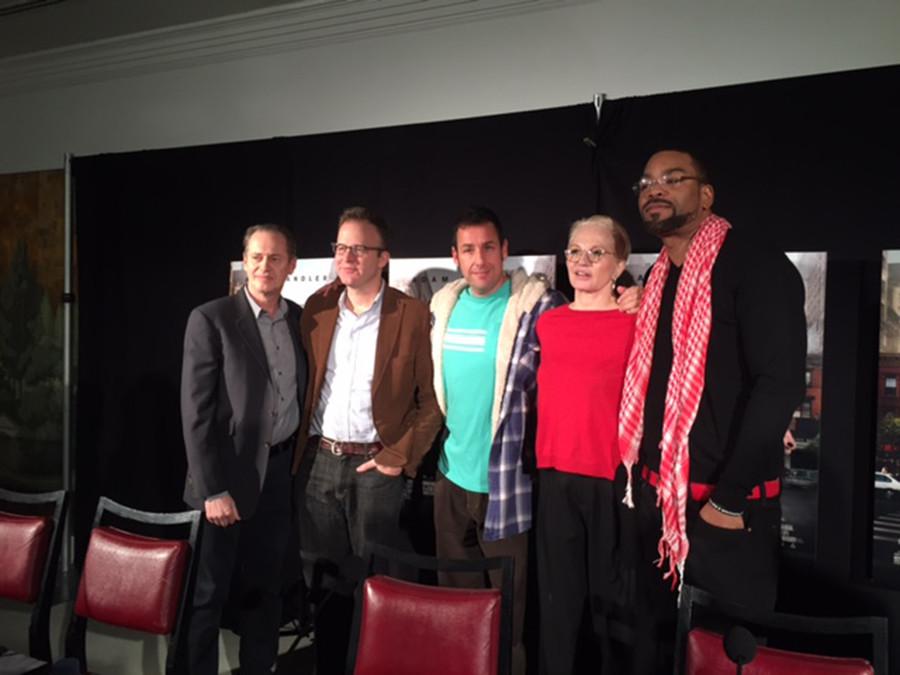Sandler film creative but chaotic
Steve Buscemi, Tom McCarthy, Adam Sandler, Ellen Barkin and Method Man pose at a screening of “The Cobbler” on Feb. 14.
March 10, 2015
“The Cobbler” takes the old adage of putting oneself in another man’s shoes quite literally. The new movie stars Adam Sandler, an NYU alumnus, as Max Simkin, a fourth-generation cobbler who takes on others’ physical appearances by stepping into their repaired shoes. Ultimately, though, this Tom McCarthy-directed film spreads itself too thin by covering too many plots.
In a delightfully filmed sequence, Max discovers that he can inhabit others’ bodies by repairing their shoes with a magical old stitcher. After this discovery, the excitement fades into numerous bewildering episodes. Everything following this scene is contingent on Max’s ability to disguise himself. His trickery starts whimsically enough — he enters restaurants as one person and leaves them as another to avoid the check.
Max then goes down a darker and more uncomfortable path: he pretends to be his missing father and goes on a date with his dying mother. In more problematic, controversial moves, he wears the shoes of a black man to intimidate another person into giving him his shoes, and slips on a Chinese man’s shoes to walk through Chinatown. Max uses his power for mindless fun, but eventually, familiar tropes emerge and take over: the consequences of excess and the danger of pretending.
Max’s discovery of his ability occurs at a time when his neighborhood faces intense gentrification and his mother is near death. After Max slips into dangerous shoes, more unsatisfying conundrums appear: the director ambitiously ponders the morality of hit men, creates multiple murderous schemes, and casts Steve Buscemi as the questionably close barber-next-door. The film has so much material that certain storylines feel rushed or altogether abandoned.
The movie’s merits are in casting and filmography. A stellar cast comprises Sandler, Buscemi, Dustin Hoffman, Melonie Diaz, Ellen Barkin and Method Man, deliver their lines with sincerity and emotional depth. Sandler is particularly likeable in his portrayal of a lost and lonely cobbler.
The film also has some tastefully captured moments, including some brutally beautiful shots of gutting and repairing shoes. Beyond its capable cast and charming music selection, however, there is not much to see. The script brings up recurring themes so obvious that the audience might feel intellectually offended by the constant use of lucid metaphor.
Another questionable aspect of the movie is its somewhat racist undertones. At “The Cobbler” press conference, director Tom McCarthy addressed this issue.
“Ultimately, I don’t know if I had a message to convey,” McCarthy said. “I was trying to embrace the New York I saw around us and me, and I think we had a light-hearted approach to a lot of the themes.”
The film’s highly creative concepts ultimately spiral out of control, with its superfluous amount of plots. Though “The Cobbler” is laudable for its creativity and independence, it ultimately may have had a clearer message if the story were more contained.
“The Cobbler” opens on March 13.
Email Audrey Deng at [email protected].
















































































































































